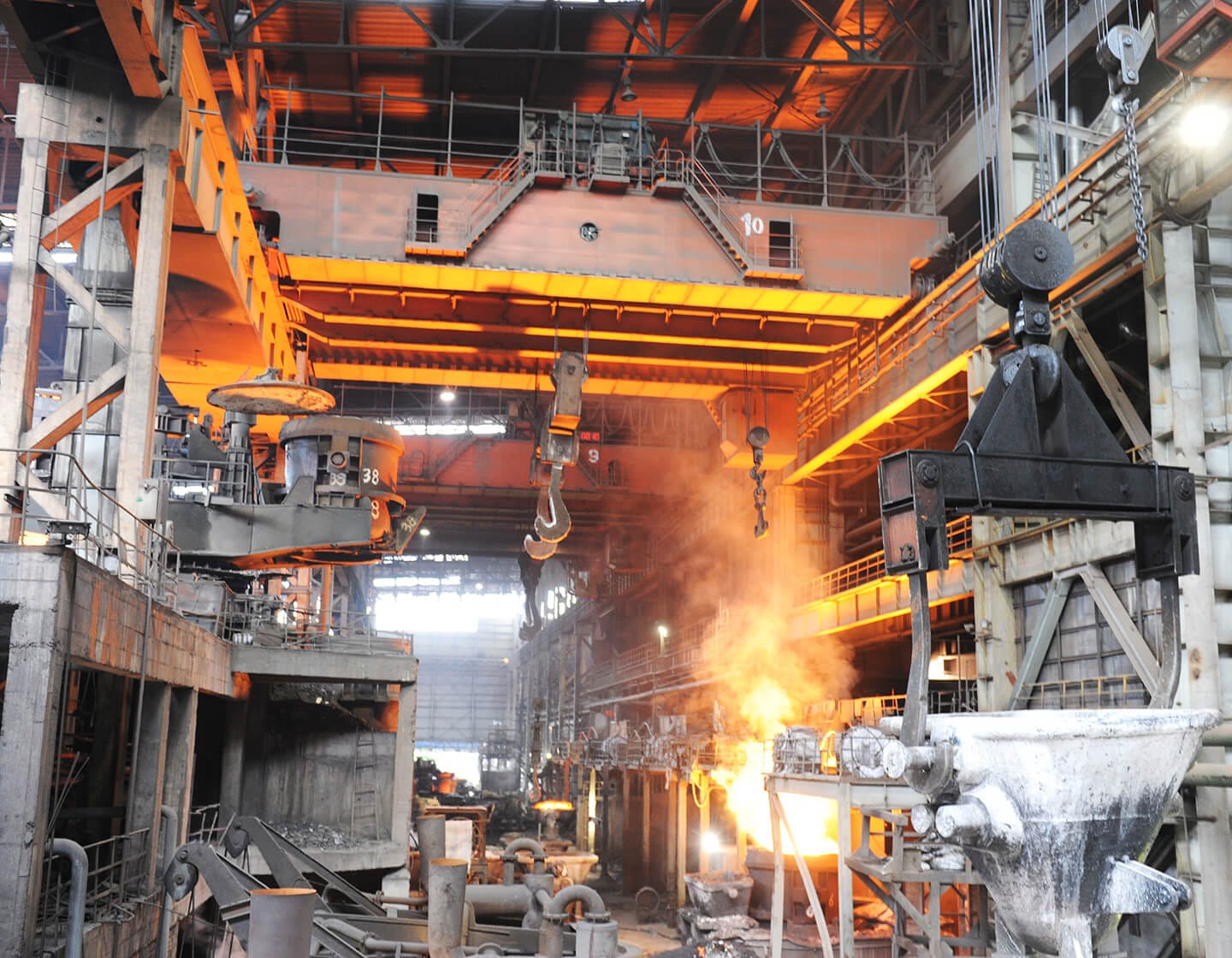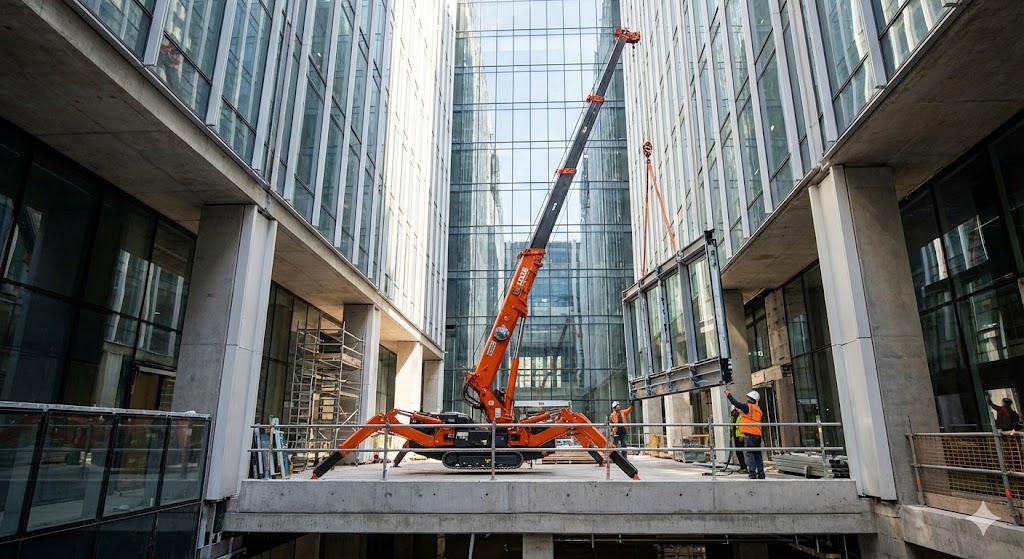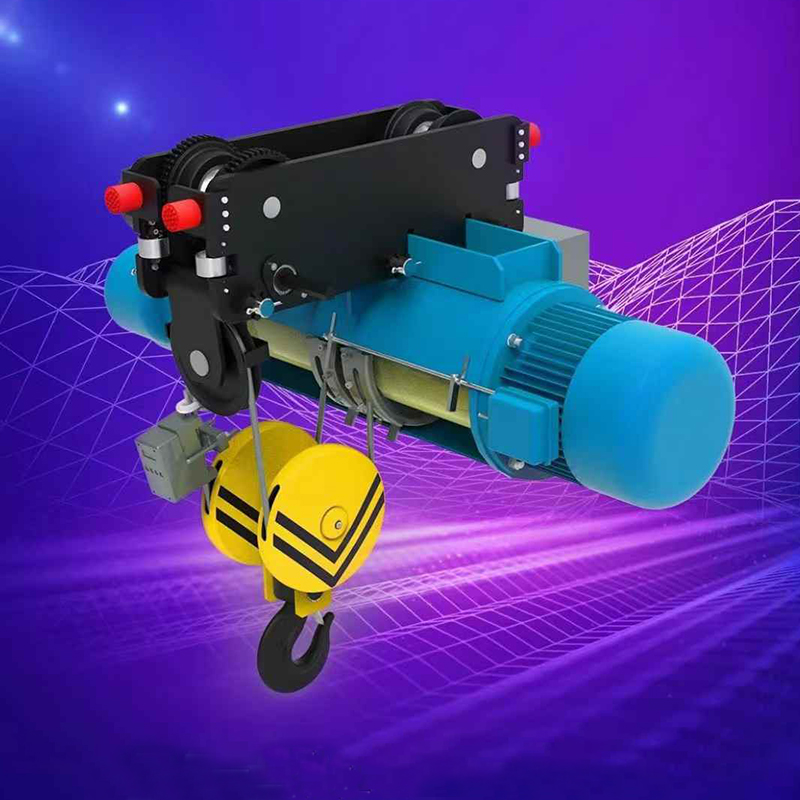Rail Mounted Gantry Cranes: Complete Guide to Structure, Operation, and Applications
Introduction
When handling containers in ports, rail yards, and logistics hubs, efficiency and reliability are key. A rail mounted gantry crane (RMG crane) is one of the most advanced solutions designed for large-scale container handling. Unlike mobile yard cranes, RMGs operate on fixed rails, providing stability, high lifting capacity, and automated control.
This article explores the structure, components, operation principles, advantages, and selection guidelines for RMG cranes, helping buyers and engineers make informed decisions.
What Is a Rail Mounted Gantry Crane?
A rail mounted gantry crane (RMG) is a large, rail guided container crane primarily used in container yards, intermodal terminals, and railway freight stations. It can span multiple container rows, enabling efficient stacking and retrieval of heavy loads.
Typical features include:
Lifting capacity: 30–65 tons (customizable up to 80+ tons)
Span width: 20–50 meters, covering multiple container rows
Stacking height: up to 6–8 containers high
Power supply: electric via cable reel or busbar system
Control options: cabin control, remote control, or fully automated PLC system
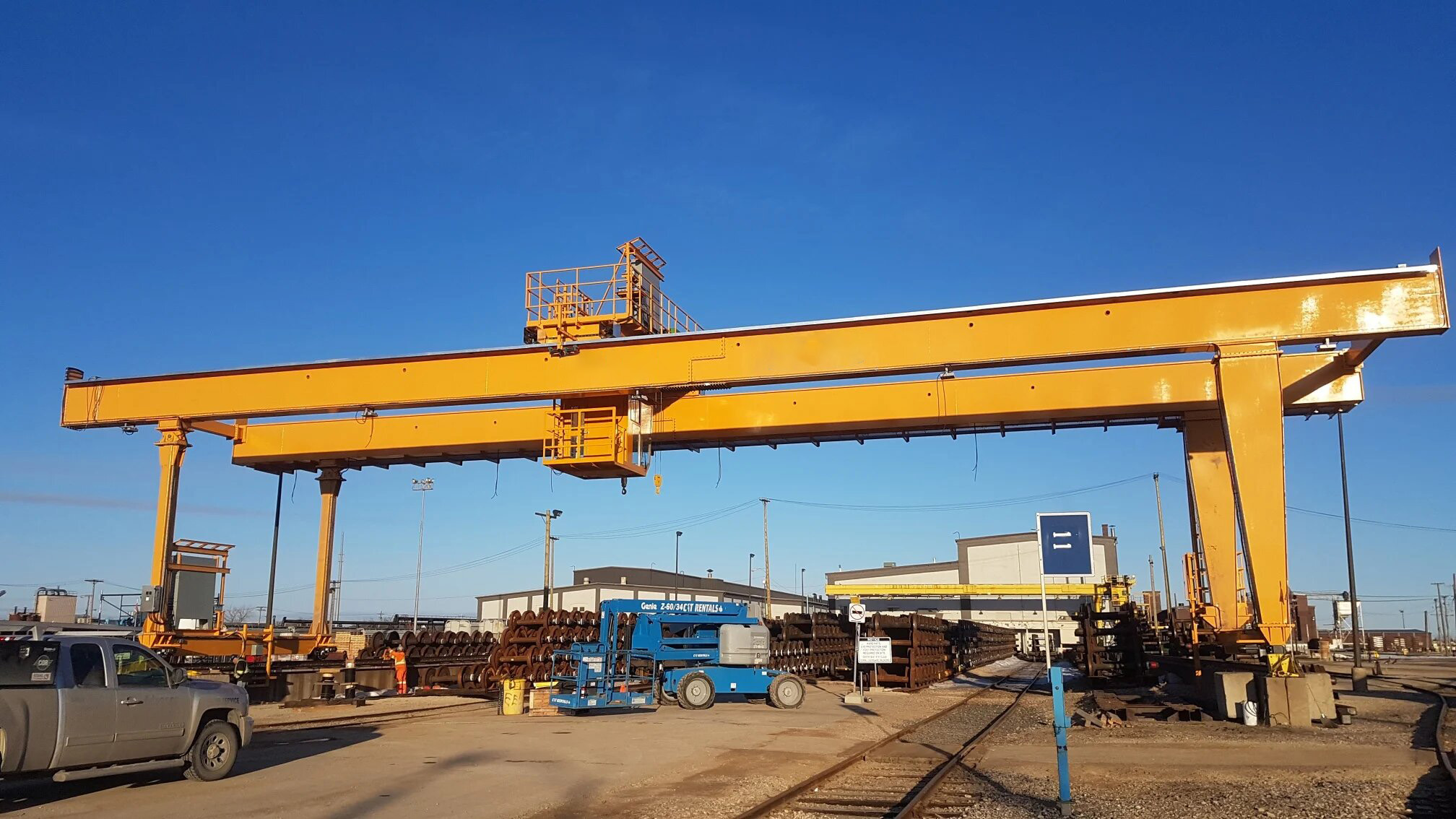
Main Components of an RMG Crane
1. Steel Structure
Main Girder: Box-type design ensuring rigidity and long-span stability.
Legs: One rigid leg and one flexible leg to prevent rail stress.
Trolley Frame: Houses the hoisting mechanism and moves across the span.
2. Hoisting and Traveling Mechanisms
Hoisting System: Equipped with wire rope hoist or winch for lifting containers.
Trolley Traveling System: Ensures smooth lateral movement.
Gantry Traveling System: Runs along the rails, powered by multiple motors with frequency converters.
3. Electrical and Control System
Power Supply: Cable drum or conductor rail system.
Control Modes: Operator cabin, remote radio control, or fully automated handling.
PLC Integration: Enables intelligent scheduling, fault diagnosis, and real-time monitoring.
4. Safety Systems
Overload protection devices
Anti-sway technology for stable lifting
Limit switches for travel and hoisting
Emergency stop controls
Wind speed detectors and storm locks for coastal operations

Advantages of Rail Mounted Gantry Cranes
Applications of RMG Cranes
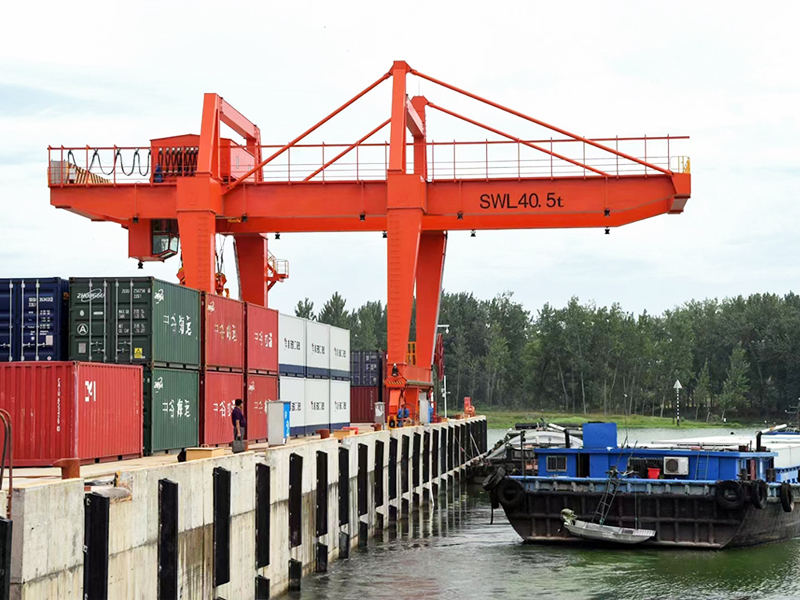
Port Terminals
Stacking and moving containers between ships, trucks, and storage areas.
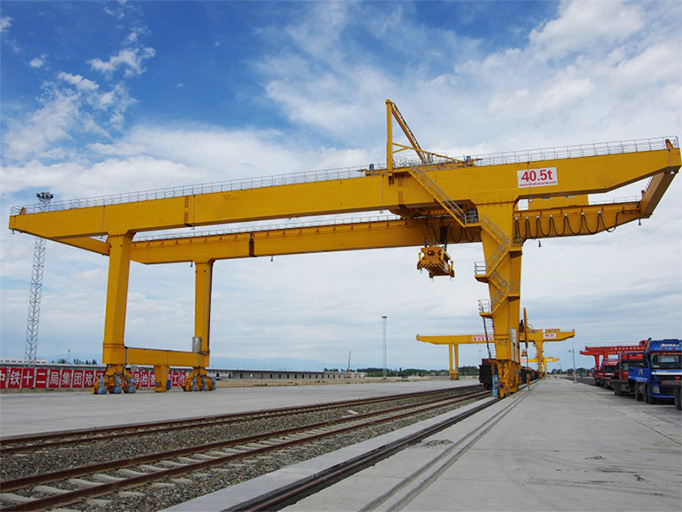
Port Terminals
Transferring containers between trains and trucks.
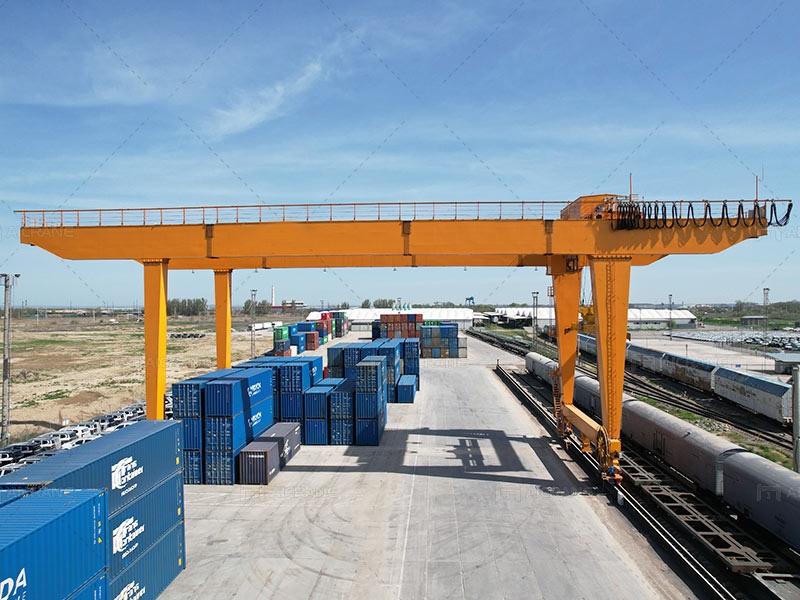
Inland Logistics Parks
Supporting intermodal freight systems.
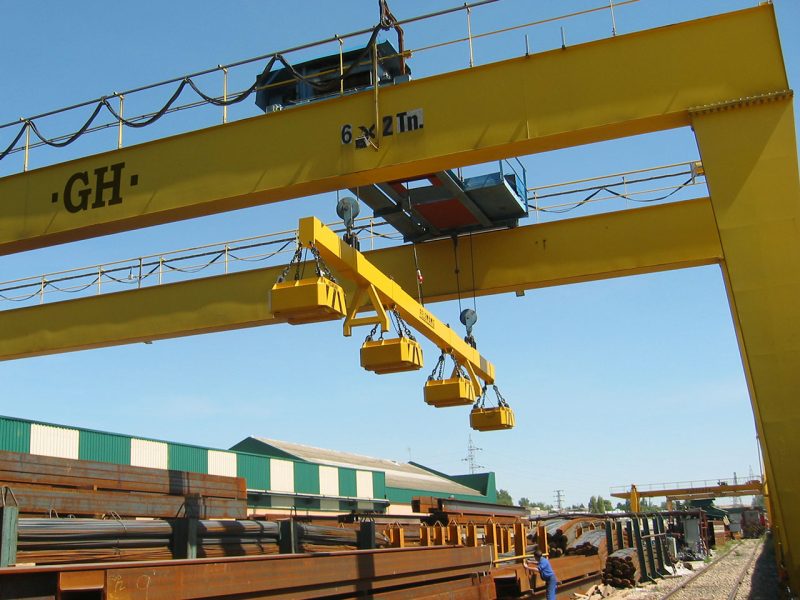
Large Industrial Projects
Heavy equipment handling in steel plants and power stations.
RMG vs RTG: Which Crane Fits Your Yard?
A common question among terminal operators is whether to choose RMG or RTG (Rubber-Tyred Gantry Crane).
RMG cranes offer higher stability, lower operating costs, and automation capability, but require rail foundations.
RTG cranes provide mobility and flexible deployment, suitable for yards with changing layouts.
👉 For a detailed comparison, see our full guide: RMG vs RTG Crane.
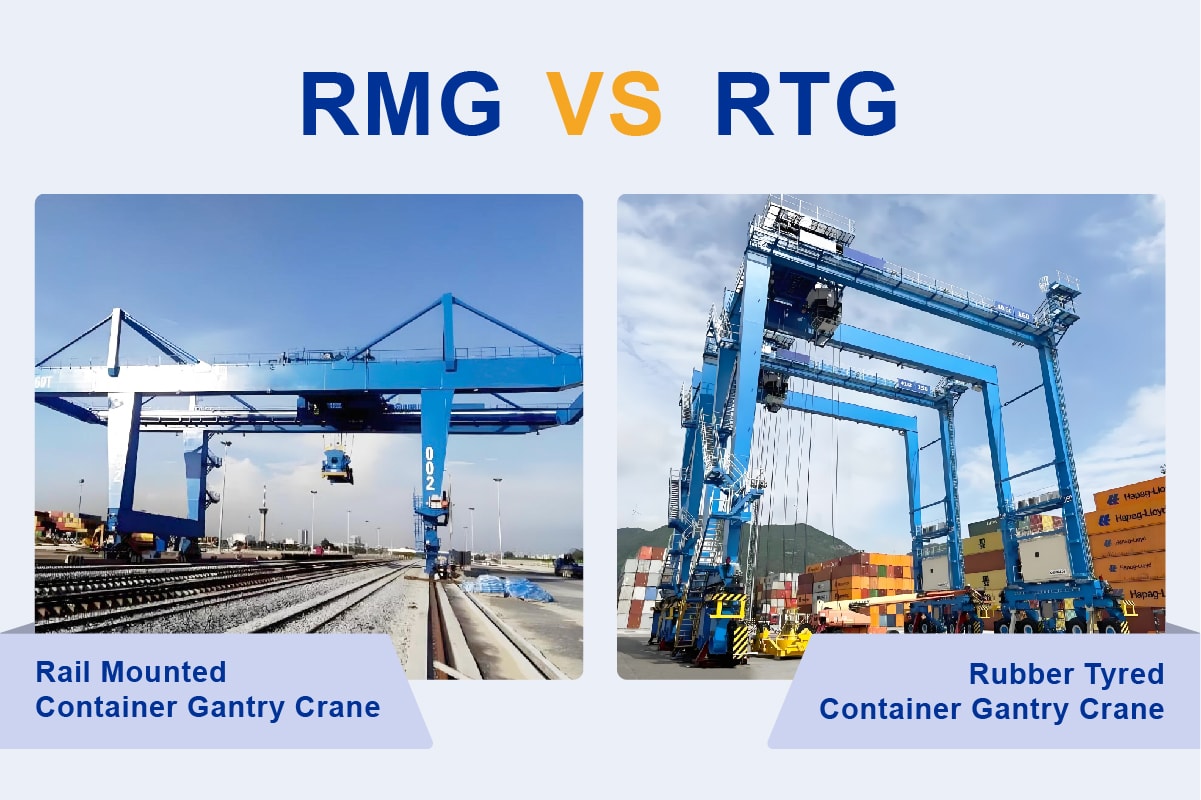
Buying Guide: Key Factors to Consider
When selecting an RMG crane, buyers should evaluate:
Lifting Capacity – Match container weights and throughput requirements.
Span and Height – Based on yard layout and stacking density.
Duty Class – A6/A7 for heavy-duty, continuous operation.
Power Supply Options – Cable drum vs busbar system.
Automation Level – Manual, semi-automated, or fully automated.
Environmental Conditions – Wind load, seismic resistance, anti-corrosion coatings.
Budget and Lifecycle Costs – Consider both CAPEX (purchase) and OPEX (operation & maintenance).
Conclusion
Rail mounted gantry cranes are critical assets for modern logistics and container terminals, offering high efficiency, automation readiness, and long-term reliability. Whether you are upgrading an existing yard or designing a new intermodal facility, choosing the right RMG crane configuration will significantly improve productivity.
For expert guidance and tailored solutions, contact SLKJCrane today. Our engineering team provides customized RMG designs that meet international standards and adapt to your operational needs.
Conclusion – Ensure Reliable Operation with SLKJCrane

Expert in Overhead Crane/Gantry Crane/Jib Crane/Crane Parts Solutions
Eileen Hu
With 20+ years of experience in the Crane Overseas Export Industry, helped 10,000+ customers with their pre-sales questions and concerns, if you have any related needs, please feel free to contact me!
Frequently Asked Questions (FAQ)
Production and delivery usually take 6–10 months depending on customization. Installation requires 2–3 months with rail foundation preparation.
Yes, they are equipped with wind speed detectors, storm locks, and anti-corrosion coatings for coastal and inland harsh environments.
Advanced PLC-based control adjusts trolley speed and braking to minimize load swing, ensuring safe container handling.
Not mandatory, but many new terminals opt for semi- or full automation to reduce labor costs and improve throughput.
Cranes as the Backbone of Modern Steel Plants
Cranes as the Backbone of Modern Steel Plants How the Right Steel Plant Crane Solutions Drive Efficiency, Safety,
Where Spider Cranes Really Shine: 7 Typical Applications & Real Project Scenarios
Where Spider Cranes Really Shine: 7 Typical Applications & Real Project Scenarios When people ask me about spider
How To Choose The Right Spider Crane
How To Choose The Right Spider Crane (Mini Crawler Crane) for a Project – My Practical Experience When
Low Headroom Wire Rope Hoist for Tight Workshops | SLKJCrane
Cost Saving Low Headroom Wire Rope Hoist for Tight Workshops When I visit customers’ workshops and warehouses, I
Contact Us Now
Have questions about our cranes or need help?
Reach out to our friendly team for expert support and guidance.
We are here to help you power your journey towards a greener future !
Address: Crane Industry Park, Xinxiang City Henan Provice

